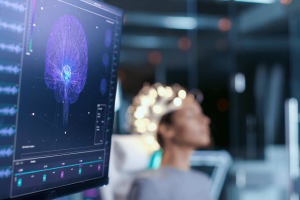
Modern forms of media convey short bursts of information present in items like phone notifications or messages on the videos we watch, to our minds much faster than we can process spoken words. But can we identify these texts as fast as we can analyse what the visuals, which are also in our tertiary screen life, are composed of?
”These experiments suggest several ways in which the language processing system in the brain may be able to process language in a similar way to how scenes are processed, where the gist may be obtained in the blink of an eye,” adds Liina Pylkkänen, a linguist and psychologist, an associate professor at New York University and the head of the study published in Science Advances and the Journal of Neuroscience.
Email succeeded by social media and instantly available smartphones have given our reading a new pace – no longer a slow and meditative practice but quick and intermittent consumption of content, with messages popping on phones or other media, platform notifications, and possibly soon augmented realities.
This difficult question is self explanatory: But how well do we really understand these quick messages and how do our brains manage them ? Even if the brain can only to some extent understand the meaning of these fast messages at first glance it may hint at something about the potential of the language processing system.
The scientists conducted their study by starting with prevailing scientific theories on how comprehension is understood in the field starting with the word-by-word sentence processing models. The researchers said these do not adequately explain the density of the overloads of structures of thought in the brains as units and holes seen in peripheral vision compared to the processing of words in the spoken language.
The research revealed that the left temporal cortex of the brain responsible for language processing indicated that sentences as short as three words were beginning to be separately processed from the unstructured word lists at 130 milliseconds.
“This speed raises the question of whether readers’ at-sentence-level comprehension might entail sketchy, scene-like processes more akin to visual perception than to the slow, discrete processing of words heard in the voice,” adds Pylkkänen.
The scientists also note that when a sentence has an agreement error with the wrong mark on the verb (nurses clean wounds), or has no sensible meaning, this rapid structure detection occurs in the left temporal cortex.
“This hints at the fact that the signals imply that the grammar and the meaning of the words may be detected, but not the other aspects of the basic structure of phrases,” says Jacqueline Fallon, the first author of the Science Advances study whom is now a doctoral student at the University of Colorado, but was a scholar at NYU when the study was being carried out.
This idea was in line with other related research on these rapid signals in the Journal of Neuroscience, conducted by NYU graduate student Nigel Flower and others. The fact that it demonstrated that even working with phrases and switching two adjacent words, that is: “all are cats nice” negatively affected the brain’s rapid reaction rate confirmed this hypothesis. Of course, such small lapses can even go unnoticed by readers of the articles and other types of materials.
However, Flower pointed out that beginning at around 400 msec the participants’ brain seemed to ‘compensate’ for the error and parse the sentence as though it were perfectly grammatical.
By presenting full words at once the experimenters were able to understand that although the participants saw nonsense text and there were mistakes in the text which the authors were putting together, the participants’ brains were able to recognize basic phrase structure within seconds even if the meaning of the complete text was non-existent.
‘These could help in understanding the natural ability of the brain to comprehend language, beyond the syntactic and sequential organisation of spoken language’, adds Pylkkänen.
Reference: Fallon J, Liina Pylkkänen. Language at a glance: How our brains grasp linguistic structure from parallel visual input. Science Advances













